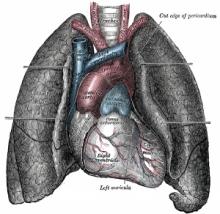Lung cancer management is undergoing a molecular-profiling makeover, but how much does it matter?
An oncogenic revolution is redefining advanced-stage lung cancer as a heterogeneous collection of fundamentally different tumors types, each distinguished by a specific oncogenic driver, specifications that, in turn, help define the drugs that best control the cancer’s growth.
For example, based on newly reported findings from the Lung Cancer Mutation Consortium, roughly 17% of stage IV lung cancer tumors have a mutation in their epidermal growth factor receptor (EGFR) gene as their major oncogenic driver, making these tumors prime candidates for treatment with erlotinib or gefitinib. In another 10% of tumors the driver is an ALK gene change that makes the cancers very responsive to crizotinib.
The program at the biennial World Conference on Lung Cancer earlier this month in Amsterdam teemed with reports like these. The Consortium’s data have so far linked 54% of advanced lung cancers to any one of 10 different oncogenic drivers, a genetic alphabet soup that includes ALK, MET, MEK, HER2, etc. Testing for mutations like these, and targeting therapy accordingly was the talk of the meeting, it’s elegant and cutting edge, and, alas, it’s a strategy ultimately doomed to fail.
The nasty truth about advanced-stage, stage IV lung cancer is that it won’t sit still and fully submit to even the best-targeted, genetically appropriate agents. Inevitably, be it after 6 months or 6 years, the cancer will develop drug resistance and recur and will need treatment with a new drug or it will grow unchecked, spread, and kill. Molecular profiling and targeted therapies are stopgaps, not solutions.
Two real solutions to advanced stage lung cancer also had their moments in the spotlight at the World Conference. Both solutions depend on preventing people from ever developing advanced-stage lung cancer, either by avoiding lung cancer formation, or by detecting it early so that it’s treated at stage I or II.
How do people not develop lung cancer? Simple: Don’t smoke. Epidemiologic records from the past half century, discussed at the meeting by Oxford statistician Sir Richard Peto, put it in clear terms: U.S. cigarette smoking peaked in about 1960, and by 2009 the annual smoking rate had dropped by about half from that high level. The result: U.S. lung cancer incidence rates hit their apex in 1980, and by 2009 the rate had fallen by about 1/3. The numbers told it all: less smoking followed by less lung cancer. The sharp drop in U.S. smoking since 1960 is a lung-cancer success story.
And if lung cancer develops, find it sooner, before it’s at an advanced stage. The crux of this strategy–using annual CT lung scans to identify potential early-stage lung cancer in high-risk, heavy smokers–received its validation in a New England Journal of Medicine report just before the World Conference got underway, and just in time for the meeting’s organizing group, the International Association for the Study of Lung Cancer, to issue an endorsement of routine CT screening for people with a history of heavy smoking.
Improved insights into the genetic drivers of lung cancer, and better treatment of tumors with more targeted, less toxic drugs are meaningful advances, but even better is leveraging smoking avoidance and early diagnosis to minimize the number of patients with advanced lung cancer.
—Mitchel Zoler (on Twitter @mitchelzoler)


